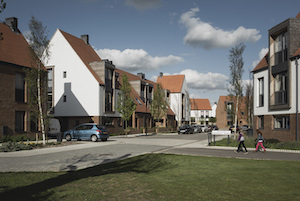View the H+H Ltd entry on BPindex
The fundamentals of aircrete as a material have not changed since it was introduced into the UK market over sixty years ago. However, it has proved its worth over time and now makes a strong case for inclusion as a Modern Method of Construction (MMC).
It is hardly a secret that since the publication of the dramatic “Modernise or Die” white paper in 2016, government focus has sharpened on the need to support methods of housebuilding that are faster and higher performance.
Much of the debate on the subject focuses on factory-build modular homes, but in fact the definition of MMC is much broader and there is certainly nothing to dictate which materials or method are preferable.
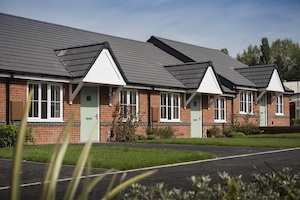 The MCHLG definition makes it clear that it is focused on objectives and is not trying to be prescriptive as to what products or methods are used to achieve them.
The MCHLG definition makes it clear that it is focused on objectives and is not trying to be prescriptive as to what products or methods are used to achieve them.
Aircrete remains the preferred material for most UK housebuilders. Combining strength with inherent thermal efficiency, aircrete blocks are also easy to use on site and, most importantly, provide the flexibility that housebuilders need when planning their sites. The speed of build can be increased or slowed in reaction to demand or to weather conditions.
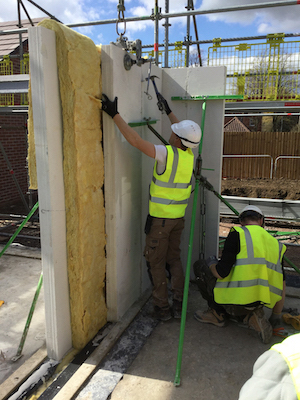 Standard aircrete blocks with traditional cementitious mortar are typically used for cavity wall construction. Repeated performance testing demonstrates that such wall constructions are easily able to meet the U-Value requirements of current building regulations and the uplift anticipated when the revised Approved Document L is published.
Standard aircrete blocks with traditional cementitious mortar are typically used for cavity wall construction. Repeated performance testing demonstrates that such wall constructions are easily able to meet the U-Value requirements of current building regulations and the uplift anticipated when the revised Approved Document L is published.
Where increased airtightness is the objective, the highest performance levels can be achieved with Thin-Joint construction – which has been the preferred choice for various low carbon and Passivhaus certified developments.
The ultra-thin joint which gives the system its name is not only airtight, but also, having a much faster curing time, allows for increased speed of build. With higher tolerances, the method also supports a more accurate build. Both these characteristics contribute to the system being acknowledged as a Modern Method of Construction.
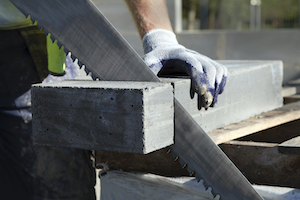 Where a more system-based approach is required – particularly for larger developments of standard house types for affordable or build-to-rent markets – H+H has developed an entirely different solution.
Where a more system-based approach is required – particularly for larger developments of standard house types for affordable or build-to-rent markets – H+H has developed an entirely different solution.
Based on Celcon Elements: story-high panels of aircrete, the I-House system was developed in partnership with Roof Space Limited. The concept was to develop a housebuilding system, based on aircrete, that allowed the entire structure of a house to be built on site within a week.
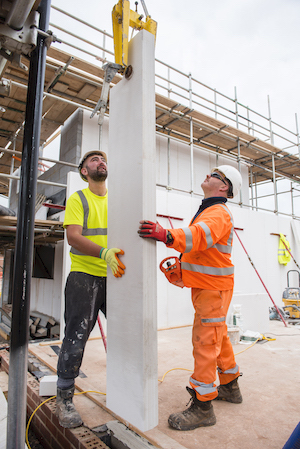 Celcon Elements provide the walls which are simply craned into place onto pre-prepared foundations. Prefabricated timber first floors and prefabricated roofs complete the structure and the package is finished with exterior insulation. Within a week there is a watertight shell, ready for interior trades to move on site and exterior finishes such as masonry to be applied simultaneously.
Celcon Elements provide the walls which are simply craned into place onto pre-prepared foundations. Prefabricated timber first floors and prefabricated roofs complete the structure and the package is finished with exterior insulation. Within a week there is a watertight shell, ready for interior trades to move on site and exterior finishes such as masonry to be applied simultaneously.
Recognised on introduction in 2017 with a Housebuilder award, the I-house system has also been supported with both BPOAS and NHBC warranties and is rapidly gaining ground as an advanced Modern Method of Construction.
For more information on aircrete and on the range of building solutions provided by H+H, visit www.hhcelcon.co.uk.

